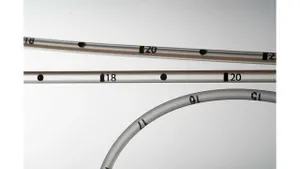Lightweight yacht employs carbon fiber reinforcement
Following on from its successful use in the aeronautics sector, carbon multiaxial reinforcement is set to be a key material in a lightweight yacht. Both the hull and the deck of the Albatros designed by Jean-Marie Finot are made from C-Ply, Chomarat's (Le Cheylard, France) range of carbon multiaxial reinforcements.
December 26, 2014
Following on from its successful use in the aeronautics sector, carbon multiaxial reinforcement is set to be a key material in a lightweight yacht. Both the hull and the deck of the Albatros designed by Jean-Marie Finot are made from C-Ply, Chomarat's (Le Cheylard, France) range of carbon multiaxial reinforcements.
|
Lightweight hull and deck make for fast sailing in Albatros yacht. |
Because C-Ply is both light and strong, it helps to make the Albatros a boat that is fast, sturdy and easy to handle. Thanks to its composite reinforcements, the boat's hull weighs just 28kg and the deck a mere 22kg. The parts are between 2- and 6-mm thick.
The aligned fibers and ply weights of the C-Ply structure, reportedly make it the perfect material for this lightweight, efficient and cost effective solution. "The combination of different C-Ply reinforcements in a monolithic laminate has a sandwich structure effect that enables a 25 to 30% increase in rigidity compared with the classic reinforcement stack (0/90)," says Jean-Marie Finot, founder and CEO of Finot Group. By layering multiaxials in a monolithic structure and aligning fibers parallel to the length of the boat, the boat's rigidity can be significantly improved, enabling it to withstand flexion.
The pressure of the waves is supported by the boat's shell, comprised of all the vertical structures that make up the exterior part of the boat's hull. This shell must have bend resistance from one longitudinal section to the other, from one rail to the other. "In other specific structures with even more demanding characteristics (parts subjected to forces along a specific vector, visible automobile parts or those subject to impact loading in aeronautics), C-Ply can be used by removing fibers placed on the perpendicular of the main effort axis and/or by using extremely thin basic plys (50 g/m²). This means we can develop totally innovative multiaxial materials," says Philippe Sanial, Group R&D Director at Chomarat.
C-Ply reportedly enables parts to be mass produced because it can be manipulated without risk during the RTM stage and because it is a drapable material that can be molded around the component. "We chose this product because it is compatible with vinylester resin, a material with the best resistance to corrosion and water absorption that is usually used with fiber glass. C-Ply also enables parts to be mass produced using the innovative RTM process we developed for large-scale parts. The Albatros is the only boat currently manufactured using this process," says Jean-Marie Finot.
Chomarat supplies some of the carbon for the Albatros. "We chose Chomarat because they offered the best solution in terms of technical performance and cost effectiveness," he concludes.
About the Author(s)
You May Also Like



